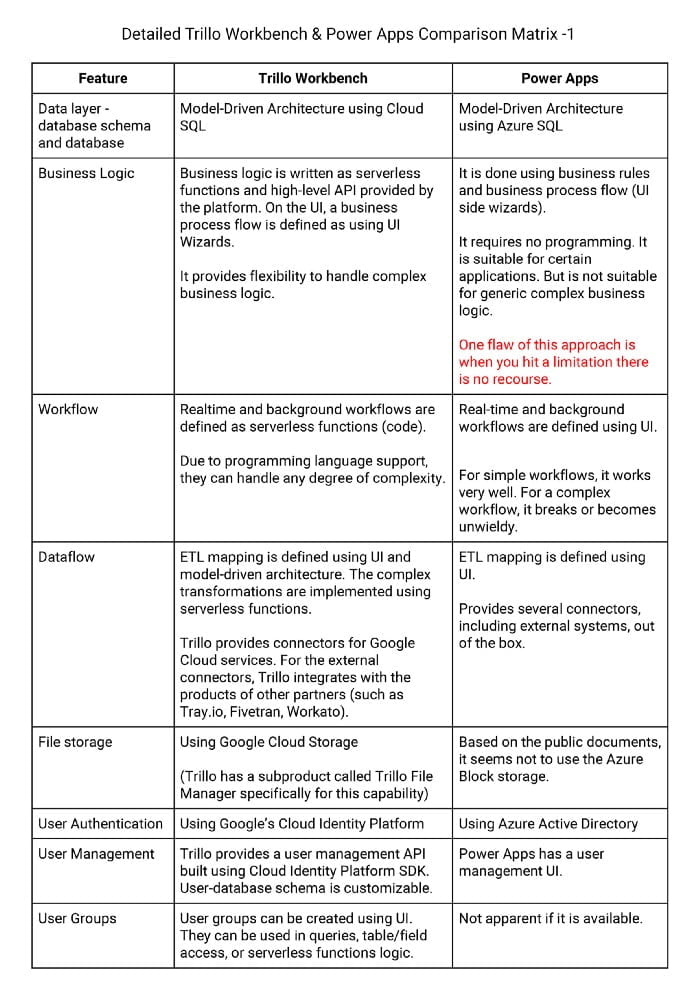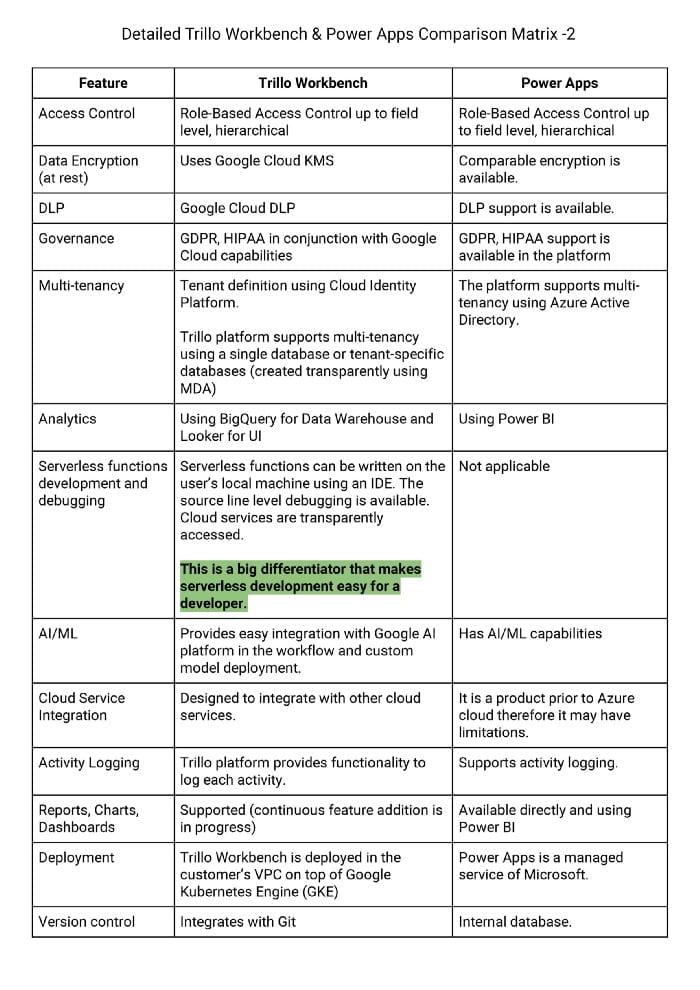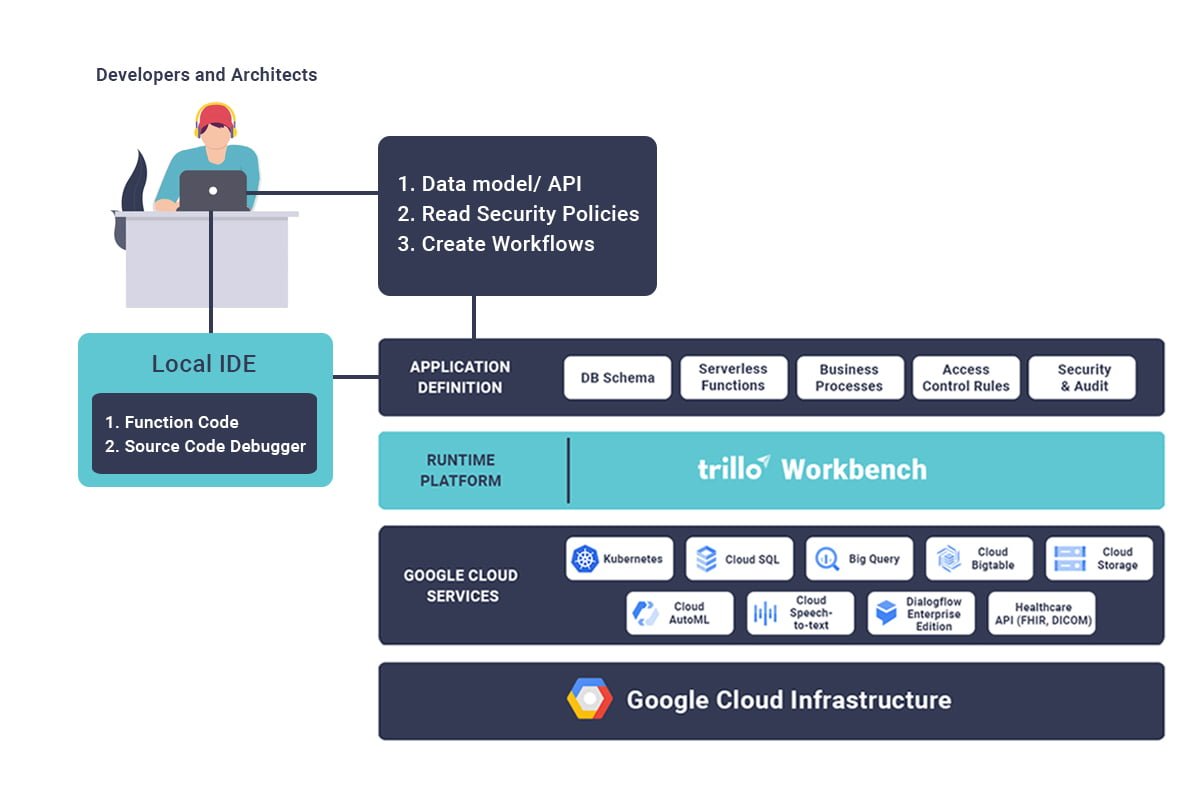Trillo Workbench as Compared to Microsoft Power Apps
Trillo is a Google Partner for two-plus years with several hundred customers. Our mission is to simplify application development on the cloud by providing an application-centric interface. Trillo Workbench abstracts cloud services and provides an easy-to-use interface for describing applications. In the context of Google Cloud, The Workbench handles wiring to the appropriate Google Cloud Services. Users can skip learning of the cloud console and cloud internals. Instead, they directly get to tasks of application development.
Trillo Workbench vis-a-vis Microsoft Power Apps
Microsoft Power Apps is a popular application platform on Azure. Trillo Workbench is a similar platform. Therefore we will use Microsoft as the benchmark for describing the features of the Trillo Workbench.
The rest of this document compares Trillo Workbench and Microsoft Power Apps. This comparison also provides the list of features of Trillo Workbench, albeit indirectly.
Differentiators of Trillo Workbench with Power Apps
Although Trillo Workbench and Power Apps fall in the category of low-code platforms, their approaches are different. Power Apps is really no-code. Trillo is low-code. In Power Apps, application logic is written using a flow diagram and UI. Trillo makes use of serverless functions for the business logic and significantly simplifies its development and debugging (by hiding cloud complexities). The challenge with flow diagram-driven platforms is that they are usually great — until they are not. At some point, applications outgrow the flow diagram capabilities. Although you can integrate Azure serverless functions, it is not the same as scripting the platform from within.
With Trillo Workbench, the Serverless functions allow developers to get the benefits of custom development without building a custom application from scratch. We believe that Trillo Workbench on Google Cloud is more suitable for a generic application of any complexity.
The following is a list of key differences:
- Power Apps targets citizen developers. Trillo is friendly towards developers and architects. Therefore the complexity of applications built using Trillo Workbench can be significantly higher. This makes Trillo equally suited for small and enterprise applications.
- Power Apps uses templates, widgets, and UI-based interfaces for business logic. It makes the tool suitable for certain types of applications (biased towards templates). But developers hit a wall when faced with an unanticipated or complex scenario.Trillo abstracts various Google Cloud services (as APIs) to make it simple to write business logic as serverless functions. A developer can write application logic on the local machine with their favorite IDE without realizing that the program interacts with services on the cloud.
- Power Apps is a managed Microsoft service (SaaS-like offering). Trillo Workbench is deployed on top of GKE in the customer’s environment. Trillo Workbench can also be deployed on Anthos.
Conclusion
In conjunction with the Google Cloud services, Trillo Workbench is a better and more flexible platform for developers than Microsoft Power Apps. Using serverless functions (code) for business logic, the Workbench provides a developer-friendly platform. Enabling source-level debugging in any IDE running on the developer’s machine eliminates a significant friction point in the development of serverless functions.
Trillo Workbench is a low-code platform suitable for building a generic application with significant degrees of complexity and not constrained by a handful of templates. Using Trillo Workbench, citizen developers and product managers can participate in application development.
Using Microsoft’s Power Apps as a yardstick, this document illustrates that Trillo Workbench can be a very relevant and valuable offering for Google Cloud customers/prospects that provides superior capabilities for application developers. Trillo’s integration with existing Google Cloud services is key to this offering to generate win-win opportunities.


